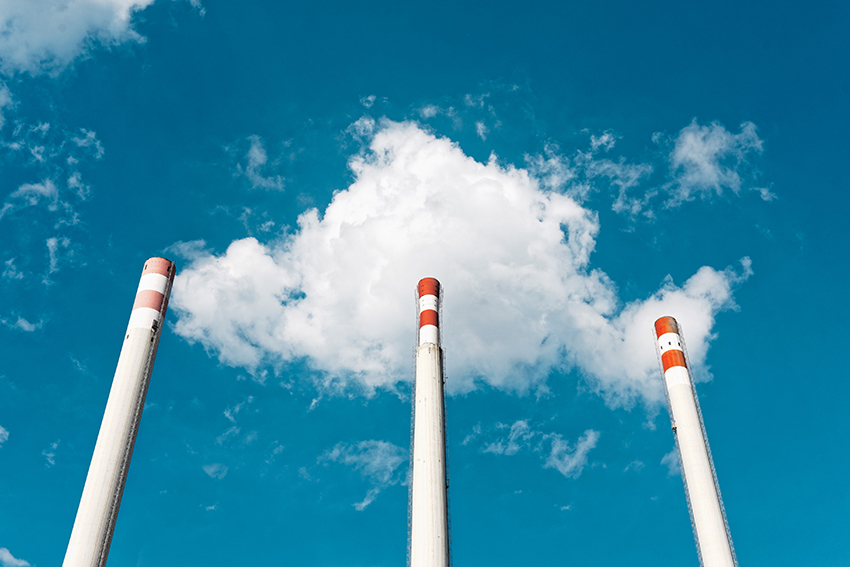|
Don’t Fall for the Hydrogen
Hype.
By Eddie Bautista and Lewis Milford

A number of reputable outlets have touted hydrogen as an
emissions-free energy source. Even the newspaper of record, The New
York Times, recently described hydrogen as a “clean burning fuel.”
In fact, it’s hard to read an energy article without encountering the
new hydrogen hype. But these reports get a critical scientific detail
wrong.
Hydrogen does produce little more than water when used in fuel cells
to make electricity. Fuel cell technology has great promise for use in
vehicles and various industrial applications.
But that’s not what the gas and utility industries have in mind.
Instead, they intend to blend hydrogen with natural gas and burn it in
power plants, just as they have burned oil, coal or gas for decades.
When hydrogen is burned it emits little or no carbon dioxide — that’s
the good news. The bad news is that hydrogen combustion produces
dangerously high levels of nitrogen oxides — scientific studies
indicate that burning hydrogen could produce NOx levels six times
higher than burning methane.
Long-term exposure to NOx increases the risk of respiratory conditions
and heightens sensitivity to allergens. NOx is also a precursor to
particulate pollution and ground-level ozone, which are both
associated with severe adverse health effects — including higher death
rates from COVID-19. Urban communities of color are already heavily
burdened by these pollutants.
The fossil fuel and utility industries certainly are aware of the
non-CO2 emissions produced by burning hydrogen. A report issued by
Mitsubishi, which is developing a hydrogen- and gas-burning plant in
Utah — applauded as the future of the hydrogen economy — notes that
the new plant still “will produce NOx and CO2 emissions equivalent to
those from modern natural gas plants.”
Even the Trump administration’s Department of Energy identifies
hydrogen combustion as a problem. A recent DOE report found that
“additional R&D is needed” to control NOx emissions from blended
hydrogen and natural gas combustion.
Yet despite these emissions problems, plans are moving ahead to blend
and burn hydrogen with natural gas in new or reconfigured power plants
across the country. Such efforts are under way throughout the American
West, and two global finance giants recently proposed a new
hydrogen-and-gas plant in Ohio. Gas-fired power plants in Florida,
Virginia and California will add hydrogen to the fuel mix starting
next year.
In New York, there are plans to burn a hydrogen-natural gas blend in
urban “peaker” plants. These plants, which fire up to meet times of
high energy demand, are among the most egregious polluters. They are
typically located in low-income areas and communities of color, often
in areas with high levels of NOx pollution. Utilities are under
pressure to close these noxious plants and replace them with clean,
renewable energy sources.
However, by adding “clean” hydrogen to the fuel mix, these outdated
plants will get a new lease on life. Hydrogen combustion will justify
continued operation of natural gas plants and gas infrastructure.
After all, a natural gas plant that burns 20 percent hydrogen will
still need 80 percent fossil gas. And once established, hydrogen
demonstration projects are likely to expand and become the new
“industry standard.” This could well lock in gas plant usage for the
next few decades, despite the coming competition from renewables and
battery storage and other cleaner sources. It’s a masterful and
audacious survival plan.
But it has not gone without protest. Environmental justice advocates
have already raised objections to a blending project in Los Angeles.
In the east, a coalition of environmental organizations have called on
New York state officials to evaluate the environmental, climate, and
public health impacts of burning hydrogen in New York City
neighborhoods.
These groups have the right idea. We should not impose experimental
NOx-producing power plants on communities without independent public
health investigations before any permitting proceeds. This is
especially important in low-income communities of color, which will
bear the brunt of these schemes. We need to call a pause on hydrogen
combustion until the NOx problem is fully understood and addressed by
objective experts.
We already know what could happen if we don’t. A few decades ago, to
stave off climate change, European governments pushed for diesel
engines in cars. Diesel engines don’t produce CO2 emissions, but they
do produce copious levels of NOx. Unfortunately, NOx was not factored
into the E.U. climate policy trade-off.
In the last few years, European and U.S. government agencies
discovered that European car manufacturers secretly manipulated
emissions data to disguise the levels of NOx produced by their diesel
vehicles. The “Diesel-gate” scandal was the unfortunate but predicable
result of ignoring NOx emissions at the outset of a climate fight.
Sadly, so were thousands of premature deaths each year from increased
air pollution.
Let’s not rerun that failed experiment in the U.S. power sector.
This country’s history of energy production is littered with
hyperbolic marketing claims about revolutionary, free or harmless ways
to generate power. While various productive uses of hydrogen may
someday be the real climate deal, the “clean” hydrogen combustion
schemes breathlessly promoted in the press today are little more than
dangerous hype.
Eddie Bautista is executive director of New York City
Environmental Justice Alliance.
Lewis Milford is president and founder of Clean Energy Group.
This article was published
in collaboration with the Island
Press Urban Resilience Project, which is supported by The Kresge
Foundation and The JPB Foundation. It was originally published January
5, 2021 on
Morning Consult.
Green Play Ammonia™, Yielder® NFuel Energy.
Spokane, Washington. 99212
www.exactrix.com
509 995 1879 cell, Pacific.
exactrix@exactrix.com
|